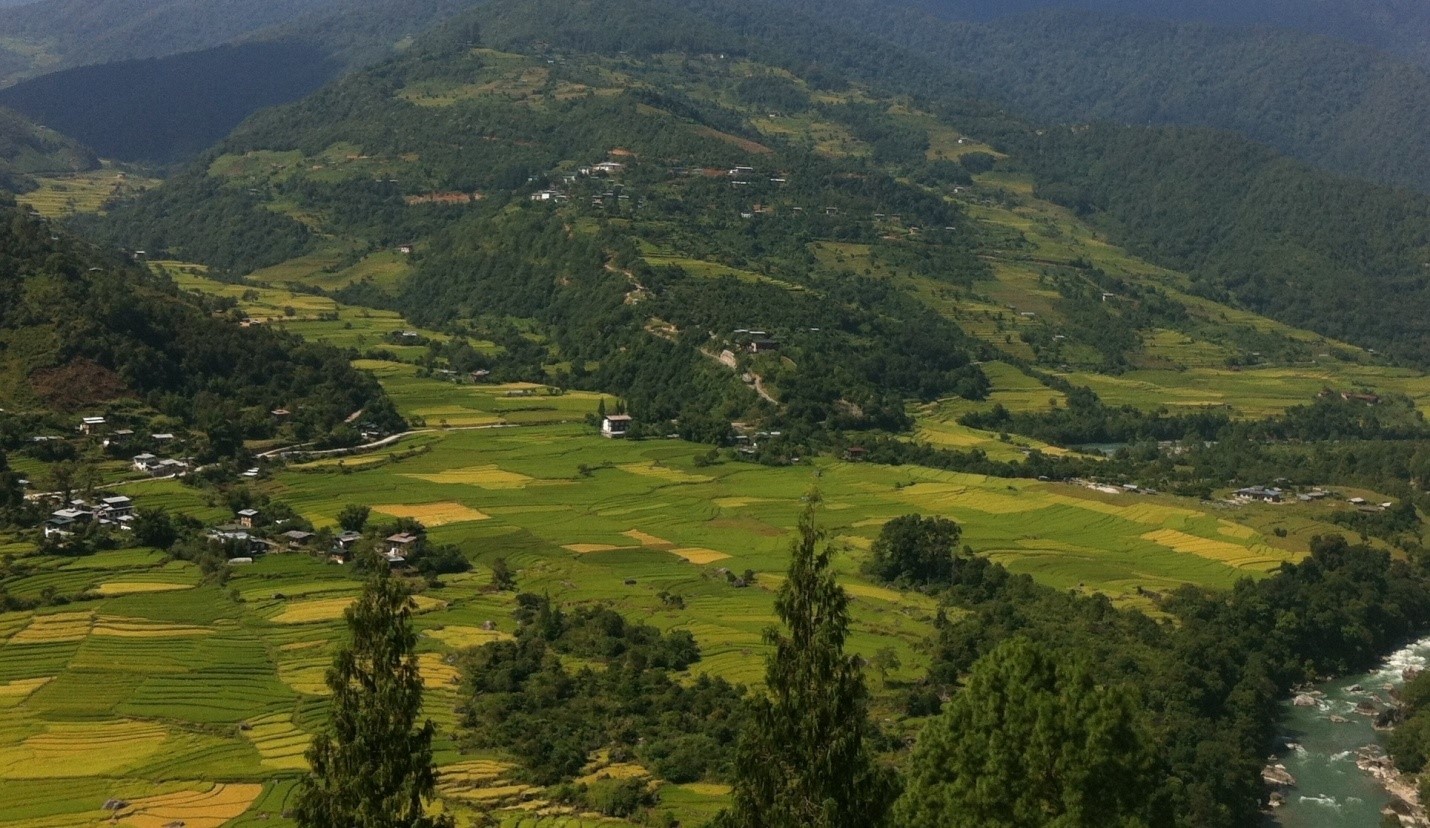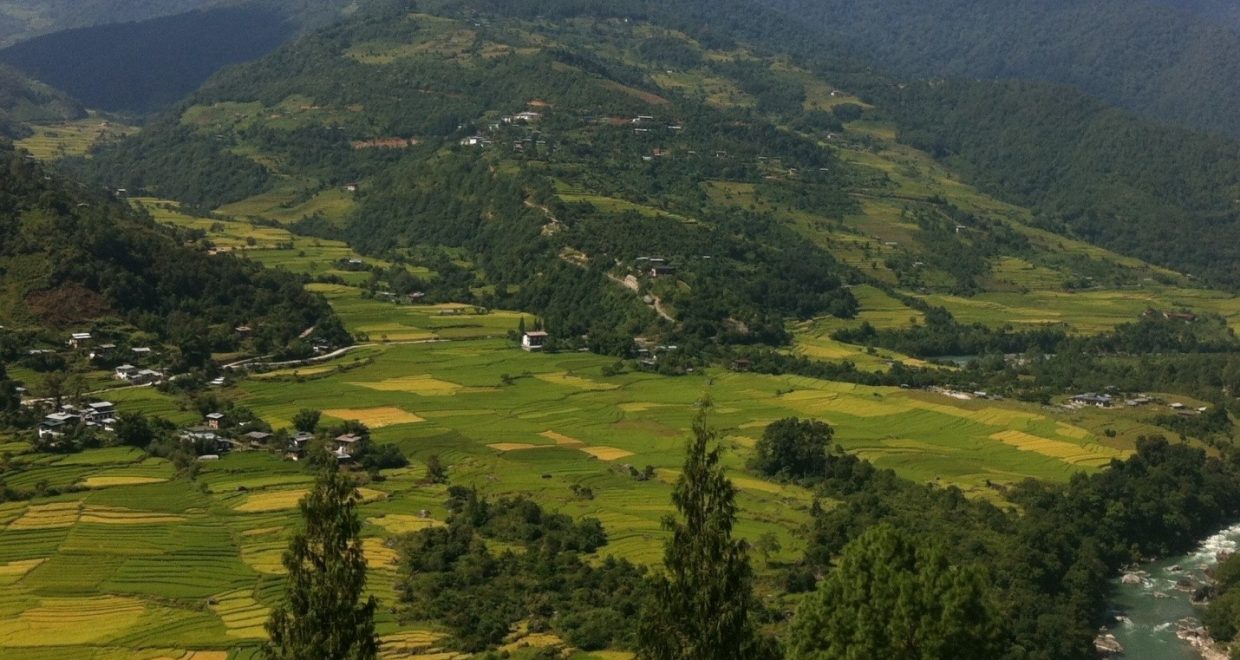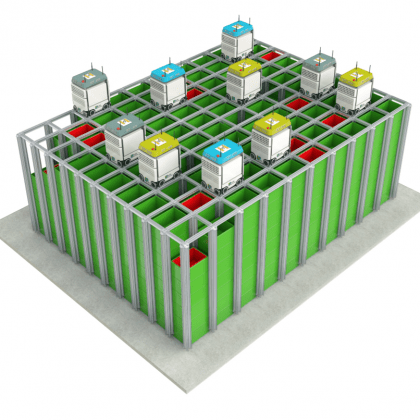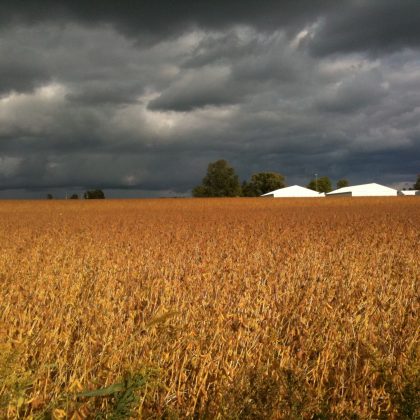Future climate scenarios predict change in Bhutanese rice areas
Rice is the most important cereal crop in Bhutan and annual production is often equated to the country’s food security. Rice is cultivated throughout Bhutan and its agro-ecology ranges from 100 m above sea level (masl) in the southern lowlands to elevations as high as 2700 masl in the north. Besides being an important staple crop, rice is part and parcel of Bhutan’s tradition and culture. Further, it provides immense aesthetic value to the landscape, thus indicating that it is not just important as a food, but also as a way of Bhutanese expression.

The goal of this study was to assess the potential impact of climate change on future rice distribution in Bhutan. We used a Species Distribution Modelling (SDM) technique called maximum entropy (maxEnt) modelling, which is commonly used for forecasting distributional dynamics of plant and animal species based on climatic suitability. This SDM technique used the three internationally recognized representative concentration (of greenhouse gases) pathways (RCPs) of the Inter-governmental Panel on Climate Change (IPCC) to forecast the future distribution of rice. Currently, the ecological niche for rice distribution covers 11, 512 km2. Under the future projected climate for 2040-2060, this area changes to 11,909 km2 in the low-emission scenario (RCP2.6), to 8,843 km2 in the moderate-emission scenario (RCP4.5), and to 8,755 km2 in the high-emission scenario (RCP8.5). Of the three emission scenarios, there is a large likelihood of maximum changes (43%) under the high-emission scenario (RCP8.5) and minimum changes under the low-emission scenario (RCP2.6). However, under the moderate-emission scenario (RCP4.5), the suitability change is projected to be about 30%, mainly occurring in the mid- and low-altitude regions of Bhutan. A predicted reduction of 1-43% in ecological space for rice spells astounding negative impacts on the livelihood and food security of the Bhutanese people, as crop production might start declining due to unfavourable climatic conditions.

The three future projections indicate both horizontal and vertical changes in the environmental and climatic suitability of rice by 2060. The probability of large changes in distribution under the moderate- and high-emission scenarios indicates the need to build up climate change mitigation and adaptive measures. One of the best strategies, to start with, could be targeted climate-smart production support or incentives, and development of climate-resilient infrastructure relevant to different locations. The findings of this study can also be used to identify and categorize rice growing areas into high, medium and low climatic risk areas to enable informed decisions and to facilitate planning according to the level of the projected changes.
The article “Prediction of Bhutan’s ecological distribution of rice (Oryza sativa L.) under the impact of climate change through maximum entropy modelling” by Ngawang Chhogyel, Lalit Kumar, Yadunath Bajgai and Layomi Sadeeka Jayasinghe was published in The Journal of Agricultural Science and is available free for a month.






